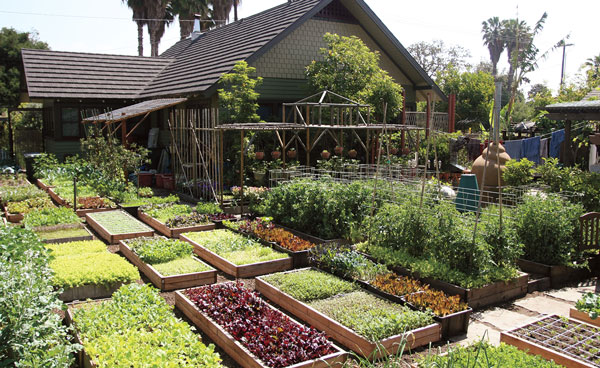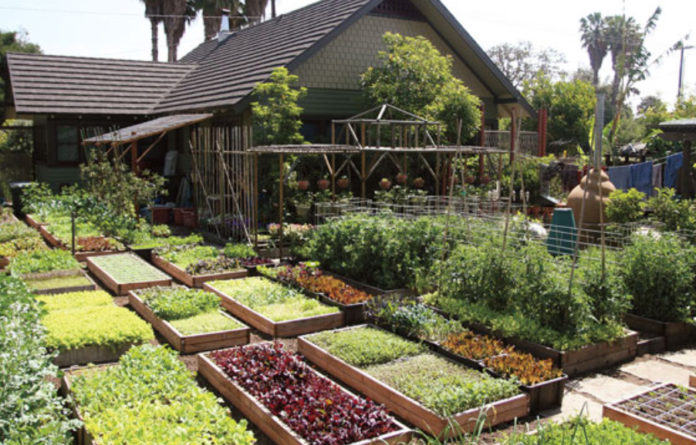 In September of 2021 my wife and I managed to rent a property that had some space to grow food for ourselves. With both of us being complete city slickers with zero experience it’s been a very disheartening time. Yes some stuff has grown, but the amount of food we have so far received compared to the money we have spent to get the process going has been anything but “sustainable”. Lots of things have died. More things have failed to grow at all and the few things that have grown have given truly piddly amounts of calories to survive on.
In September of 2021 my wife and I managed to rent a property that had some space to grow food for ourselves. With both of us being complete city slickers with zero experience it’s been a very disheartening time. Yes some stuff has grown, but the amount of food we have so far received compared to the money we have spent to get the process going has been anything but “sustainable”. Lots of things have died. More things have failed to grow at all and the few things that have grown have given truly piddly amounts of calories to survive on.
So yesterday we were invited to someone’s house to learn from a lady who has a permaculture garden that she has been developing for many years.
This lady never buys anything for her garden. Everything except human pee and poop that is organic matter, stays in the garden creating an almost complete loop in a carbon cycle. Her strategy is one of imitating nature rather than subduing it. Basically creating a micro jungle environment with multiple plants, bushes and trees both edible and inedible in the same patch of each garden area around her house. Leaves and twigs fall, plants grow and die. Soil is never turned over. Layers are simply added. All kinds of animals and “pests” come into the garden, take what they need and leave their droppings. The result is a truly abundant supply of food that requires very little time to manage. Yes, she has compost heaps and worm farms and yes she keeps an eye on the soil to see if it needs more carbon or more nitrogen. But whenever she sees that one of her garden patches is out of balance (because the food she is growing isn’t looking as healthy as she would like) then she simply lays down some more rabbit poop, worm soil, tree leaves, grass cuttings, or whatever she thinks is lacking on top of the “forest” floor.
My interest was really piqued though when she was telling us about various pest infestations that have occurred since she has been developing her gardens. She basically decided not to try and eradicate any pests when they infested her garden. Rather she would let them do their thing and then simply plant again. The only intervention she would make would be to change the nutrient layer she would put on the top soil. More carbon on top or more nitrogen on top. Sometimes this change would see the pests reduce, sometimes the pests would finish off the crop. If the latter, she would simply plant something else on top of that area and continue on. What was fascinating was that she said often the plant that was decimated by snails or caterpillars or whatever, would often sprout again by itself and then never be troubled again by those pests.
The philosophy behind this way of doing things is one of nature always seeking balance and equilibrium. That pests only come and infest an area when something in that environment is out of balance. The pests are there to help balance be restored. In other words, pests aren’t pests at all. They are renewal and healing. They give short term unwelcome outcomes, including death, but long term they help to create better health for the garden. The garden doesn’t become immune to the pests, it’s just that the pests stop being pests and are incorporated into the health of the system.
So yes we can deal with pests by spraying them with insecticides. We can subdue nature and make it obey our will. But then we have to keep subduing, year in and year out and, obviously things that kill the pests may be of a concern to our own health. Easier to simply create a terrain where pests don’t cause problems because there is no imbalance to correct in the first place.
Seeing all of this in a garden, caused a light bulb moment for me in my attempt to reconcile germ theory and terrain theory in regards to human illnesses.
Finally the terrain theory makes sense to me. Microbial pests are no different to garden pests. They are not the original cause of the illness. They are the manifestation of the illness. The illness is the imbalance in a person’s system. The bacteria or virus is nature’s way of correcting that imbalance.
And just like a big imbalance can cause lots of death in a garden, it can cause lots of death in humans too. But over time balance within a population is restored and the illness becomes less of a problem. What we call immunity therefore is not a matter of fighting “bad” bacteria or viruses, but one where our bodies create a new terrain which incorporates both cause and manifestation of illness into our system of ingestion and excretion that no longer requires lots of “pests” to keep our bodies in balance. The bacteria or virus being the catalyst that caused the change in our internal terrains.
Better of course to simply keep a healthy terrain in the first place, so that we don’t have to go through the unpleasantness of a transformative illness. Because, just as within a garden, death may still be an outcome and the renewal of life that comes afterwards might not be your own.
The other part of this revelation is to do with modern medicine. Drugs and vaccines may (or if corruption and a depopulation agenda is at play, may not) do a great job of eradicating the bacteria or virus, but just like with pesticides for crops, are temporary solutions that often require multiple repeat treatments to suppress the pest. Each toxin used to treat one problem, invariably causes a problem of its own. A new imbalance somewhere else that nature will seek to return to equilibrium at some point with a new illness. Treating an illness with modern drugs may be necessary sometimes if that illness is likely to kill. We can’t afford to let our microbial snails kill our personal crop of life the way the permaculture lady let the actual snails kill the spinach. But we should always be looking at improving our terrain, not looking at avoiding every single pathogen or pest we may one day encounter
The terrain theory of illnesses does a much better job than germ theory, of explaining why some people can live and work with people who have highly contagious diseases and not become sick. Why there are experiments where every effort to deliberately infect people with a virus or bacteria completely failed. Why my wife is prone to strep throat but no amount of kissing her has ever resulted in me catching it from her and why I’ve never had the illness even once in my life. I didn’t “develop natural immunity”. I simply have a terrain that is not prone to the bacteria. A different terrain than my wife. The germ is manifestation of the imbalance. Not the cause.
Which brings me to another point. The permaculture lady has half a dozen different micro forests around her house. Different areas of her house have different terrains. Tiny differences in shade or wind shelter can have massive differences on what grows and doesn’t grow in each garden. Or what types of soil mix she requires to grow the same crop. There is no fixed formula, there is no one size fits all plan to successfully grow food. Each garden has its own unique needs. Its own unique terrain. As does each human being on this planet. We are not all the same. This is why mandating any drug for the entire population is genocide. What doesn’t harm me, may kill you. No matter how many people we test, we can never know how any drug will affect us personally until we take it. Thus it’s always an experiment.
Seeing this permaculture garden yesterday, has helped clarify terrain theory for me. The same principles of working with nature versus subduing nature apply just as well to human health as they do to garden health. You can make life survive with either of them. But when you subdue, there is a trade off. There is a price to be paid down the track. A problem is resolved in one area only to cause a different problem in another area. We add ever more vaccines to the list of drugs we give our kids and then wonder why autoimmune disorders and allergies are skyrocketing, for example.
This is why we must retain complete autonomy over our own health. You and only you are responsible for discovering what negatively affects your personal terrain and makes you susceptible to different “pests” or germs.
Only you can decide if that germ is ultimately going to help you in the long run or kill you first. Only you can decide if you wish any germ to be incorporated into your terrain or whether you need to subdue it with a drug. Knowledge gathered over decades of studying illnesses by “experts” can give us a general guide and reference point, but it cannot give us any definitive answers for our own personal circumstances.
You can find Stephen Wells at Telegram and purchase his books here.










